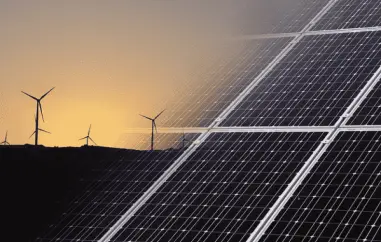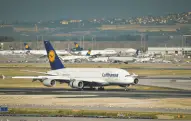To-go plastic littering the oceans
Every year, between 307 and 925 million larger pieces of trash enter the oceans from European rivers. About 80 percent of the garbage particles more than 2.5 centimeters in size that wash into the oceans worldwide are made of plastic, which in turn comes mainly from takeaway food and drink packaging.That's according to two studies by research teams led by Carmen Morales-Caselles and Daniel González-Fernández of the University of Cadiz and the European University of the Seas in Puerto Real, Spain. Production and use of plastic urgently need to be regulated at the global level, the scientists write in the journal Nature Sustainability.
According to the researchers, mass consumption and the rapid disposal of man-made products pose an acute global disposal problem. "Metal, textile, glass, paper, ceramic, rubber and especially plastic items are accumulating on coasts, in waters and seabeds worldwide," Morales-Caselles' research team writes. In one study, they had standardized existing inventories of waste in different areas of the oceans and classified the trash.Taken together, takeaway food and beverage packaging dominated litter in the oceans. On coasts, plastic bags were the most common, while in the open ocean, nearly two-thirds of macro litter was associated with fishing activities, such as ropes, nets, buoys and other fishing gear. The lowest proportion of plastic was found in riverbed litter, where there was also a lot of wood, metal, rubber and textiles. The waste in the river water consisted almost exclusively of floatable plastic.
From the distribution of floating trash in the sea, the researchers conclude that a large part of the trash brought in from the land is initially held in the coastal regions. It is possible that the trash is repeatedly washed up and deposited. This delays the uptake of plastic into the open ocean accumulation zones, the scientists write. In their view, microplastics largely originate along coasts: "The decomposition of plastic particles exposed to high temperatures and the mechanical forces of wave breaking accelerate the cracking and fragmentation of coastal plastic debris."
Daniel González-Fernández's team showed in the second study that marine litter is not just a problem of nations with underdeveloped waste management. They undertook 710 macro-litter sighting surveys in various European rivers and near-sea basins, including three areas on the German North Sea coast. Based on these and older data, the researchers used computer models to determine how much trash enters the sea via rivers and nearshore streams and basins.
One important finding was that the input from small bodies of water (with a catchment area of less than 100 square kilometers) has so far been underestimated. In fact, the catchment areas of these rivers and basins, with an average of 217 inhabitants per square kilometer, are much more densely populated than the large rivers with 87 inhabitants per square kilometer. In addition, dams and weirs in the larger rivers hold back waste, the scientists suspect.By country of origin, Turkey (16.8 percent), Italy (11.3 percent), the United Kingdom (8.4 percent) Spain (8.21 percent) and Greece (6.7 percent) are the largest generators of marine litter. Germany, with much less coastline than these countries, is in the middle of the pack of countries surveyed, at less than two percent. In the top places, he said, are many richer countries with good waste management systems.
Image by Sergei Tokmakov










































